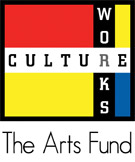|
By Burt Saidel
As your arts reviewer I have had the privilege of reporting Dayton’s rich arts fabric to my precious readers for nearly two decades. I have enjoyed, and passed on my enjoyment of numerous operas, symphonies, plays, art exhibits.
I now have a unique opportunity. I am announcing an original opera, composed right here in our beloved Dayton. Even more exciting, this column will be the first and only public notice of this great event.
The opera, in traditional Italian with sur-titles, is La Compagnia Perduta, The Company Lost. Like operas emerging from the classical period, there is a secondary title - In che modo Cassiere
Nazionale scappata? This is crudely translated as How Did National Cash Register Escape?
The opera is a dramatic tragedy well-laced with bits of humor and more than a share of pathos. The composer made use of a charming prologue which reached back in time 125 years. The characters - Giovanni Pattersone, Carlos Ketteringale and Eduardo Deeds - sing lovingly of their vision of a great company and its great home.
While there is no scene devoted to a flood in 1913, the orchestration clearly signals that tempestuous time with crashing tympani and other brilliantly played percussion instruments.
As Act I begins, the clear partnership of company and community are felt in the arias, duets and choral sections. The leading characters of this act, Roberto Oelmano, Guilliamo Andersone and Carlos Exley each have stirring arias in which their nobility of purpose is woven throughout with economic success and community activism. A charming ensemble demonstrates how these imposing characters were available to the citizens. A large chorus singing in multi-part harmony represents employees and citizens.
In Act II, hints of pathos begin to be felt. The leading characters are now changed and they are heard only by off-stage voices. A chorus of employees performs a fugal rendition of Dove il Principalo? – Where is the CEO? The welcome comic relief comes in the form of a basso-buffo singing “I’m from AT&T and am here to help you.”
The tragic overtones become more manifest. The offstage voices, one with a definite Swedish accent, seem to be plotting in dark arias and duets. The chorus of citizens, employees, mayors, con
gressmen and commissioners echo the repeated theme, “Quel che dire?” “What did they say?”
Act III is remarkable, short and fraught with tragedy. The combined choruses are heard in an interwoven theme singing, “Cosi fa?” “What happened?” Hints of a popular song are heard from the off-stage voices. I believe it is “Georgia on my mind.” This song is sung in English and its clarity of message requires no translation.
The opera is more than an evening of entertainment. Like all of the arts, it has a true impact. How long will it take for the next opera in this series to be composed, produced and performed? Thus far, only the title has been created – Noi siamo Daytoniones, Crediamo in il nostra cittta! We are Daytonians, we believe in our city!
After an exclusive review of the world premiere of an opera, I can return to the regular arts scene. While Dayton may be losing NCR and has lost Mead, Standard Register and Iams, we do have a remarkable symphony orchestra. The Dayton Philharmonic’s final classic concert of the season was poster material for how vibrant our arts community is.
A trip to Philadelphia and New York began very early the day after the concert. The trip prevented a more timely review. Timely or not, it deserves raves.
The concert was titled “A World of Change.” Each of the three works represented major transitions in the history of modern music. Ludwig van Beethoven took the symphonic legacy of Haydn and Mozart into a romantic age from which many of us have never recovered. Richard Wagner was a one composer revolution when he mesmerized all Europe in the mid-19th century. British composer Ralph Vaughan Williams created a new world of English music.
The evening opened with early Wagner. The Rienzi Overture was Wagner’s first respite from angry responses. His ear-deforming sounds began to be appreciated as he captivated his generation and beyond. The overture moves from thrilling passage to thrilling passage. The horns and percussion have a joyous time which they easily transpose to the audience.
Vaughan Williams wrote Dona nobis pacem, Give Us Peace, as a plea against the foreordained outbreak of World War I. For chorus, soloists and orchestra, it takes its text from poems of Walt Whitman, John Bright, the Bible and the Latin Mass.
The music is both stirring and reconciling. Each section is marked with special effects highlighting the meaning of the poetry. Soloists Jamie Cordes and Andrea Chenowith joined Hank Dahlman’s Philharmonic Chorus. My only complaint: the soloists each sang beautifully but needed more to sing.
Beethoven’s Fifth Symphony ended the program and the season. It is truly a work which needs no introduction. Such familiar works can be quite stale in performance. This is not the métier of the Philharmonic and Maestro Neal Gittleman. A “romantic” interpretation was given to the composition that rendered a softer, less strident piece.
Over the years, we are treated to these familiar “war horses” as if they were newly-composed. Ludwig would be proud! |
![]()






